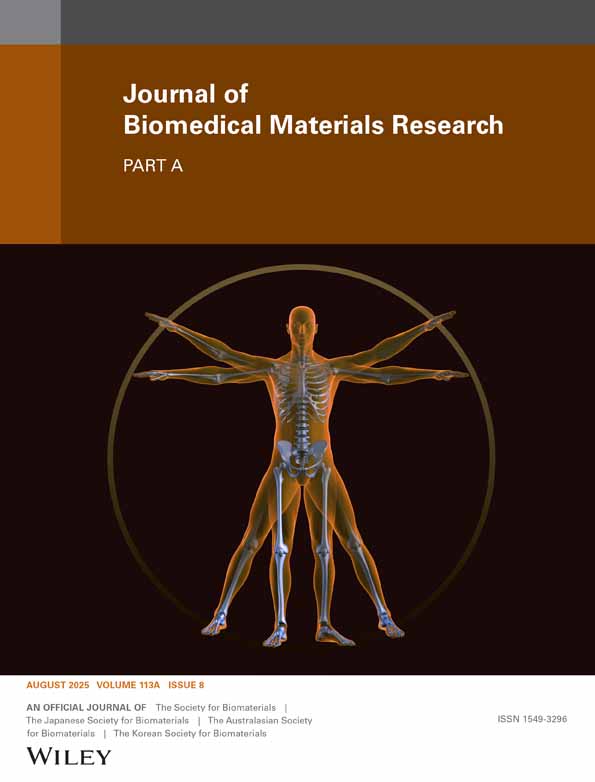Novel human endothelial cell-engineered polyurethane biomaterials for cardiovascular biomedical applications
Abstract
A tri-block coupling-polymer composed of 4,4′-methylenediphenyl diisocyanate and poly (ethylene oxide) (PEO), abbreviated MPEO, was used as the template surface-modifying additive (SMA), based on which selected amino acids (lysine, arginine, glycin, and aspartic acid) and RGD peptide were respectively conjugated as functional endgroups of the PEO spacer-arms through sulfonyl chloride-activation routes. After the immobilization of biofunctional factors, the SMA-MPEO derivatives were noncovalently introduced onto the biomedical poly(ether urethane) (PEU) surfaces by physical blending methods. The SMA synthesis and PEU surface modification were monitored and analyzed by nuclear magnetic resonance spectroscopy, attenuated total reflection-infrared spectroscopy, and X-ray photoelectron spectroscopy. The human umbilical vein endothelial cells (HUVECs) were collected and harvested manually by collagenase digestion. The cell culture was performed respectively on the MPEO derivative-modified PEU surfaces and also on the surfaces of the commercially available polystyrene cell-culture plates (TCPS) for control. The cell adhesion rates and cell proliferation rates of the in vitro cultivated HUVEC were measured using flow cytometry. The individual cell viability rates were determined with MTT assay. The cell morphologies of the living HUVECs were investigated by optical inverted microscopy, and more detailed information was acquired from scanning electrical microscopy. The results indicated that the efficacy of SMA functional endgroups was the dominant factor for HUVEC compatibility; the proper-sized PEO spacers (Mw 2 k) could support and mobilize the functional endgroups, optimizing the surface (interface) environment for the cell growth. As the endgroups of the SMA-MPEO derivatives and the bio-functional factors, the basic amino acids (lysine and arginine) demonstrated similar performances to that of the widely acknowledged cell growth-promoter, RGD peptide, which were superior to TCPS. Therefore, these MPEO derivative-modified PEU materials are promising to serve as novel polymeric permanent implants or interventional devices for cardiovascular biomedical applications. © 2003 Wiley Periodicals, Inc. J Biomed Mater Res 65A: 498–510, 2003




